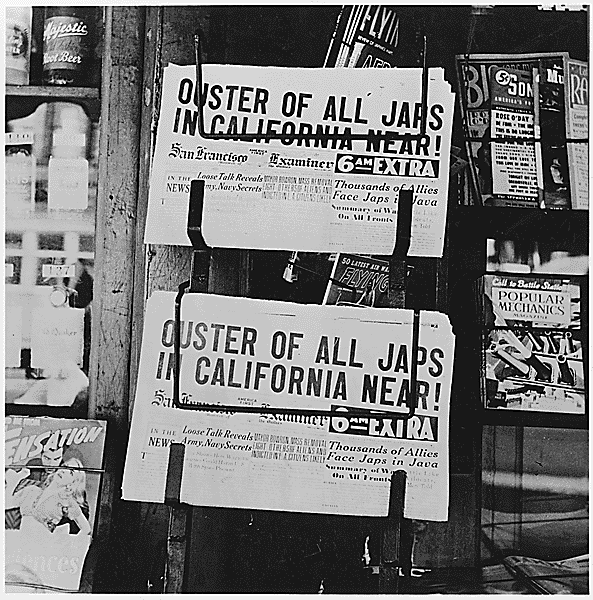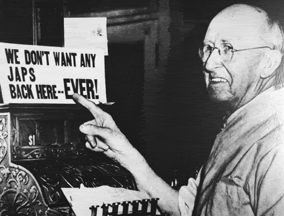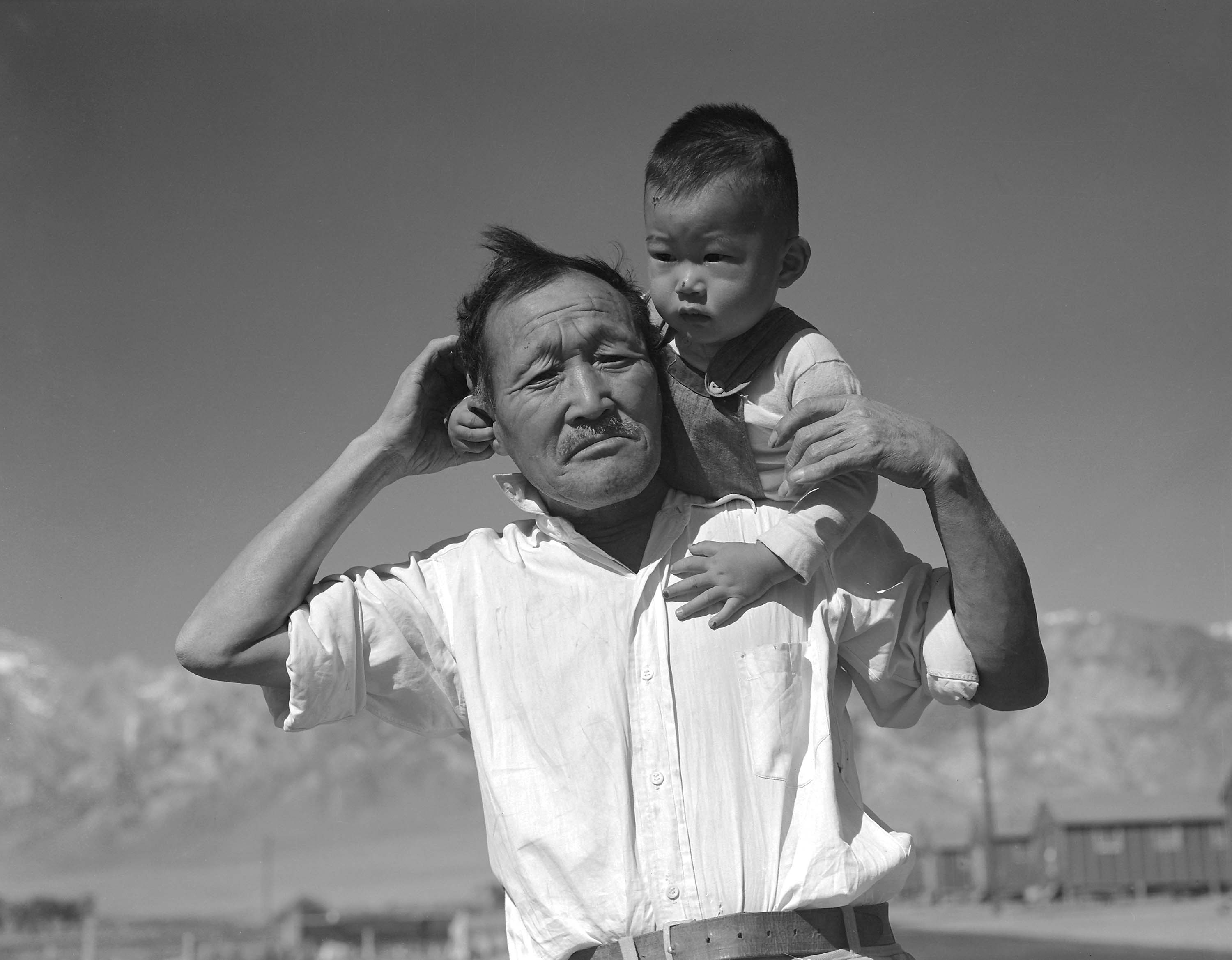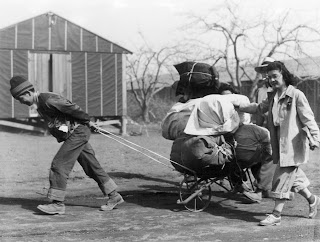
On this day, the War Relocation Authority is created to "Take all people of Japanese descent into custody, surround them with troops, prevent them from buying land, and return them to their former homes at the close of the war."


![[Manzanar_026[4].jpg]](http://lh4.ggpht.com/_A929m2R0VfU/TdUtE8NPXtI/AAAAAAAAAaI/eJouqCuKD_A/s320/Manzanar_026%5B4%5D.jpg)
Anger toward and fear of Japanese Americans began in Hawaii shortly after the bombing of Pearl Harbor; everyone of Japanese ancestry, old and young, prosperous and poor, was suspected of espionage. This suspicion quickly broke out on the mainland; as early as February 19, 1942, President Franklin D. Roosevelt ordered that German, Italian, and Japanese nationals—as well as Japanese Americans—be barred from certain areas deemed sensitive militarily.




California, which had a significant number of Japanese and Japanese Americans, saw a particularly virulent form of anti-Japanese sentiment, with the state's attorney general, Earl Warren (who would go on to be the chief justice of the United States), claiming that a lack of evidence of sabotage among the Japanese population proved nothing, as they were merely biding their time.
![[Manzanar_019[4].jpg]](http://lh3.ggpht.com/_A929m2R0VfU/TdUtF_HqJzI/AAAAAAAAAaQ/vNI3-3BWgQA/s320/Manzanar_019%5B4%5D.jpg)


While roughly 2,000 people of German and Italian ancestry were interned during this period, Americans of Japanese ancestry suffered most egregiously. The War Relocation Authority, established on March 18, 1942, was aimed at them specifically: 120,000 men, women, and children were rounded up on the West Coast.
![[Manzanar_030[4].jpg]](http://lh4.ggpht.com/_A929m2R0VfU/TdUtHP5KL2I/AAAAAAAAAac/T1_SkBJXpzU/s320/Manzanar_030%5B4%5D.jpg)
![[Manzanar_032[4].jpg]](http://lh4.ggpht.com/_A929m2R0VfU/TdUtIBiWI8I/AAAAAAAAAak/Dy56TZ6tvMU/s320/Manzanar_032%5B4%5D.jpg)

![[Manzanar_027[4].jpg]](http://lh5.ggpht.com/_A929m2R0VfU/TdUtKgEB5sI/AAAAAAAAAa0/lhHzGKtBzfg/s320/Manzanar_027%5B4%5D.jpg)
Three categories of internees were created: Nisei (native U.S. citizens of Japanese immigrant parents), Issei (Japanese immigrants), and Kibei (native U.S. citizens educated largely in Japan). The internees were transported to one of 10 relocation centers in California, Utah, Arkansas, Arizona, Idaho, Colorado, and Wyoming.




The quality of life in a relocation center was only marginally better than prison: Families were sardined into 20- by 25-foot rooms and forced to use communal bathrooms. No razors, scissors, or radios were allowed. Children attended War Relocation Authority schools.




One Japanese American, Gordon Hirabayashi, fought internment all the way to the Supreme Court. He argued that the Army, responsible for effecting the relocations, had violated his rights as a U.S. citizen. The court ruled against him, citing the nation's right to protect itself against sabotage and invasion as sufficient justification for curtailing his and other Japanese Americans' constitutional rights.




In 1943, Japanese Americans who had not been interned were finally allowed to join the U.S. military and fight in the war. More than 17,000 Japanese Americans fought; the all-Nisei 442nd Regiment, which fought in the Italian campaign, became the single most decorated unit in U.S. history. The regiment won 4,667 medals, awards, and citations, including 1 Medal of Honor, 52 Distinguished Service Crosses, and 560 Silver Stars. Many of these soldiers, when writing home, were writing to relocation centers.




In 1990, reparations were made to surviving internees and their heirs in the form of a formal apology by the U.S. government and a check for $20,000.


![[FXP_7675[4].jpg]](https://blogger.googleusercontent.com/img/b/R29vZ2xl/AVvXsEgqzyZDfHF0fIlHieJ9gqkZt6C0UI0eE1YN56rJx6jwrpPAnQw2P5exAeCOlfdoMV8PRmeqUQEyLNPDHBR4xfKJB3fppZ10NTg0-5L9aKUFcTpNyykeQfZ_-8FyxAIzjZPJvb5SWCOgoHnH/s400/FXP_7675%5B4%5D.jpg)

taken from: http://www.history.com/this-day-in-history/war-relocation-authority-is-established-in-united-states [18.03.2014]

No comments:
Post a Comment